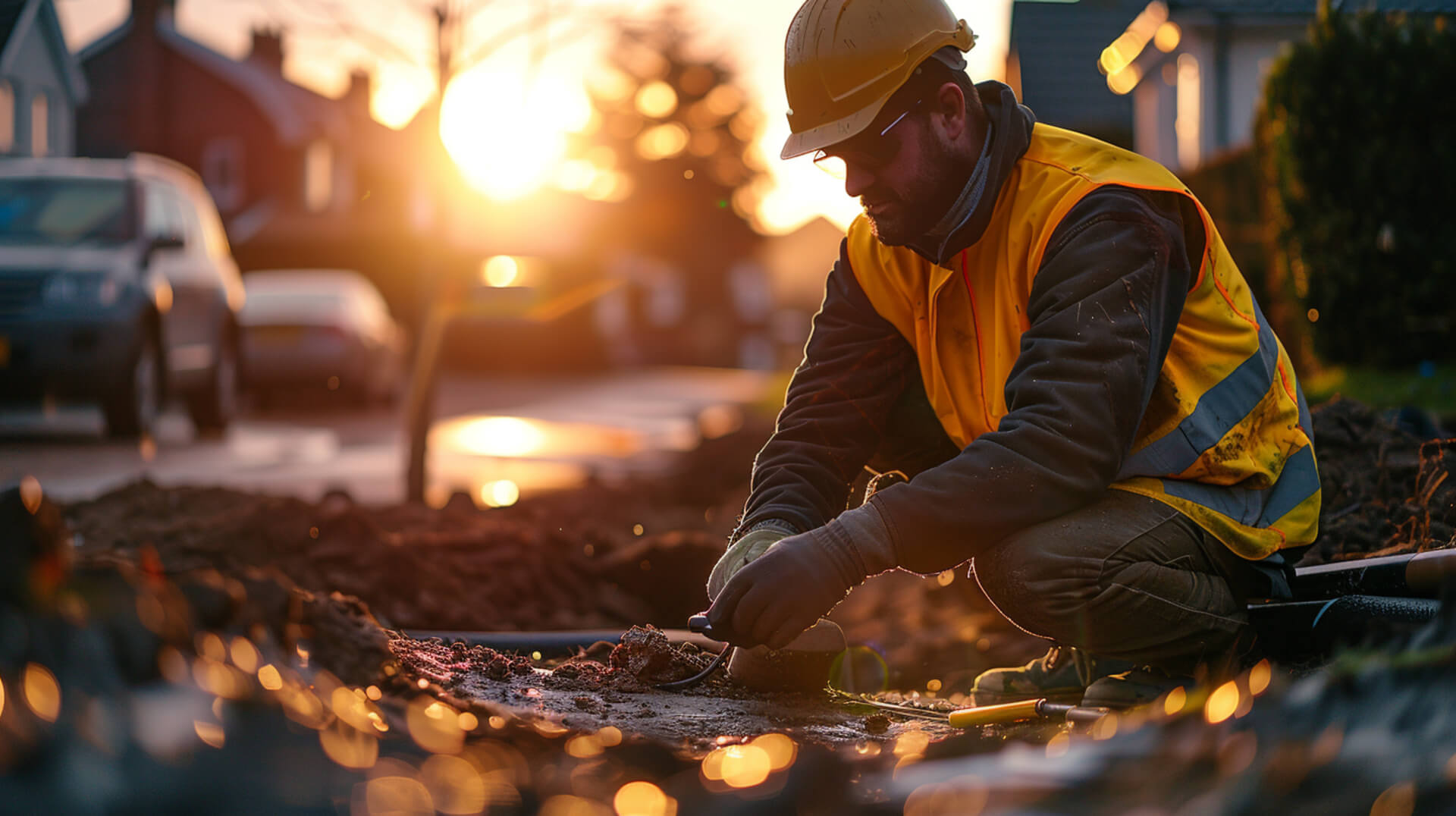 What Are The Common Problems That Require Water Main Repair
What Are The Common Problems That Require Water Main Repair
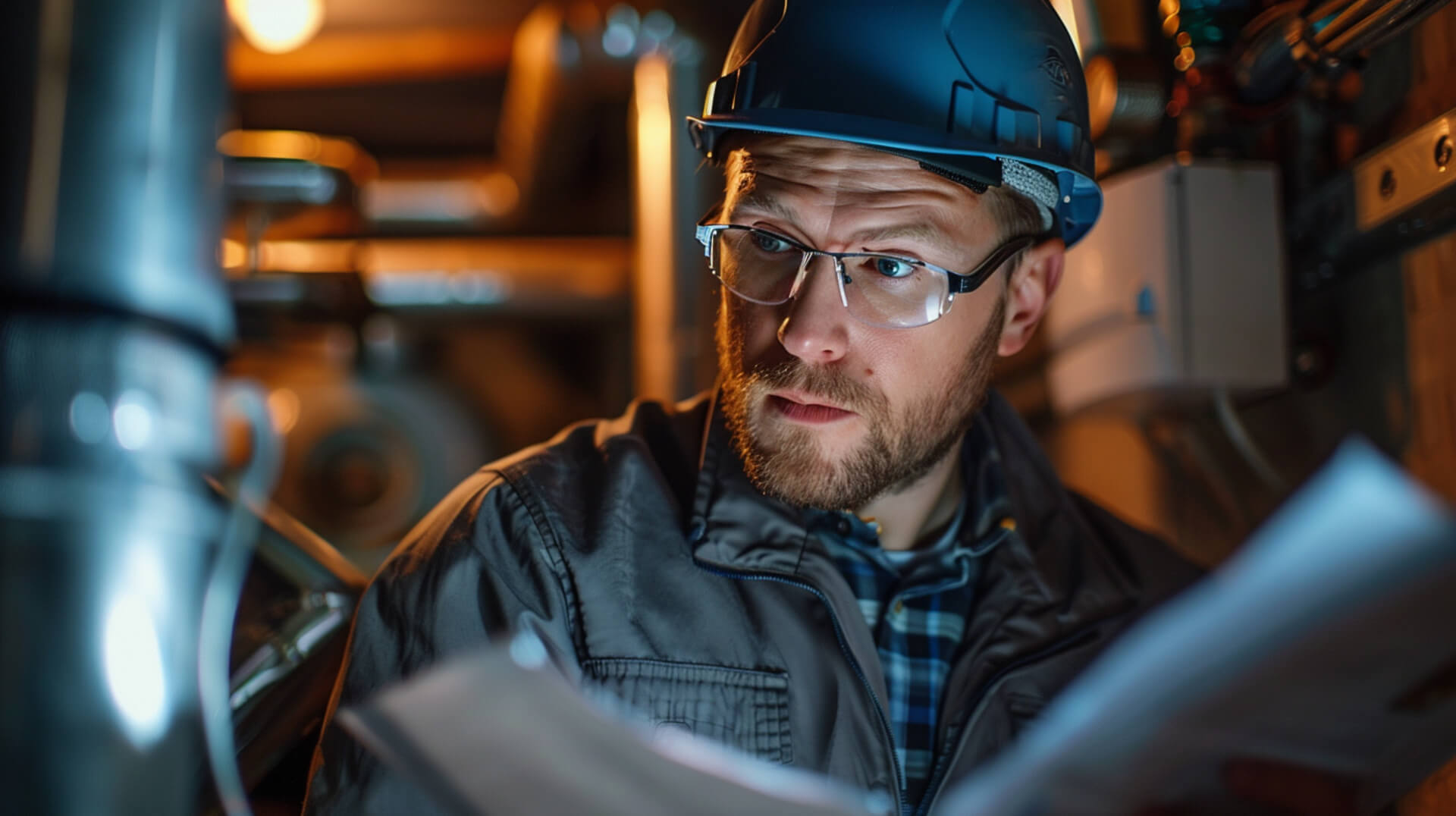
Water mains are the critical arteries of urban infrastructure, responsible for delivering clean, potable water to homes, businesses, and public facilities. These systems consist of a network of pipes, valves, fittings, and metres, working cohesively to transport water from treatment plants to consumers. The integrity of water mains is paramount, as any breach can lead to significant public health concerns and safety hazards.
Functionality of Water Mains
At the heart of a water main system lies its ability to maintain a consistent supply of water under pressure. This ensures that water is readily available for everyday use, firefighting, and other essential services. The system’s design facilitates the flow of water in a controlled and efficient manner, minimising the risk of contamination and maintaining the quality of the water supply.
Components of a Water Main System
Typically, a water main system includes:
- Pipes: Usually made of durable materials like ductile iron or PVC to withstand pressure and environmental factors.
- Valves: To regulate, direct, and control the flow of water.
- Fittings: Connectors that join pipe sections and accommodate changes in direction or pipe size.
- Metres: Devices that measure water usage for billing and monitoring purposes.
Importance of Maintenance
Maintaining the integrity of water mains is a public health imperative. Compromised water mains can lead to contamination, disrupt service, and cause property damage. Regular inspections, timely repairs, and proactive maintenance are essential to prevent water loss, protect public health, and ensure the reliability of the water supply.
Identifying Common Causes of Water Main Damage

Water mains are critical components of urban infrastructure, ensuring the delivery of clean water. However, various factors can compromise their integrity. Understanding these factors is essential for maintaining a reliable water supply system.
Ageing and Deterioration
Over time, water mains naturally deteriorate. This process is accelerated by:
- Material Degradation: Pipes made from materials like cast iron or steel can corrode, leading to leaks or bursts.
- Wear and Tear: Constant water flow and pressure changes contribute to the gradual weakening of pipes.
Environmental Conditions
Environmental factors play a significant role in water main stability:
- Temperature Fluctuations: Seasonal changes can cause pipes to expand and contract, potentially leading to cracks.
- Ground Movement: Seismic activity or heavy traffic can shift the soil, disrupting pipe alignment.
Human Activities
Human intervention often inadvertently damages water mains:
- Excavation: Construction work can accidentally puncture or break pipes.
- Urban Development: Increased building density can put additional strain on existing water mains.
Material Defects and Corrosion
The quality of materials and their resistance to corrosion are crucial:
- Material Defects: Flaws in pipe manufacturing can lead to premature failure.
- Corrosion: Chemical reactions, often influenced by soil composition and water quality, can eat away at pipes.
By recognising these common causes of damage, you can take proactive steps to ensure the longevity and reliability of your water main system.
Recognising the Signs of Water Main Problems

Identifying early signs of water main issues is crucial for timely intervention and repair. Property owners, business owners, and facility managers should be aware of the following indicators:
Visible and Audible Indicators
- Unusual Puddles: Persistent wet areas or puddles on the ground when there has been no rain could signal a leak.
- Hissing Sounds: A sound of hissing or running water when no taps are open may indicate a breach in the water main.
Water Quality and Pressure Changes
- Discoloured Water: Brown or yellow water can be a sign of pipe corrosion or sediment disturbance due to leaks.
- Low Pressure: A sudden drop in water pressure might suggest a leak or break in the water main.
Physical Evidence
- Mould and Mildew: Excessive moisture from a leak can lead to mould or mildew growth, particularly on walls or floors.
- Foundation Cracks: New or expanding cracks in the foundation may be caused by water main damage undermining the structural integrity.
Prompt recognition and response to these signs can prevent more extensive damage and ensure the continued safety and functionality of the water supply system.
Environmental and Health Impacts of Water Main Leaks
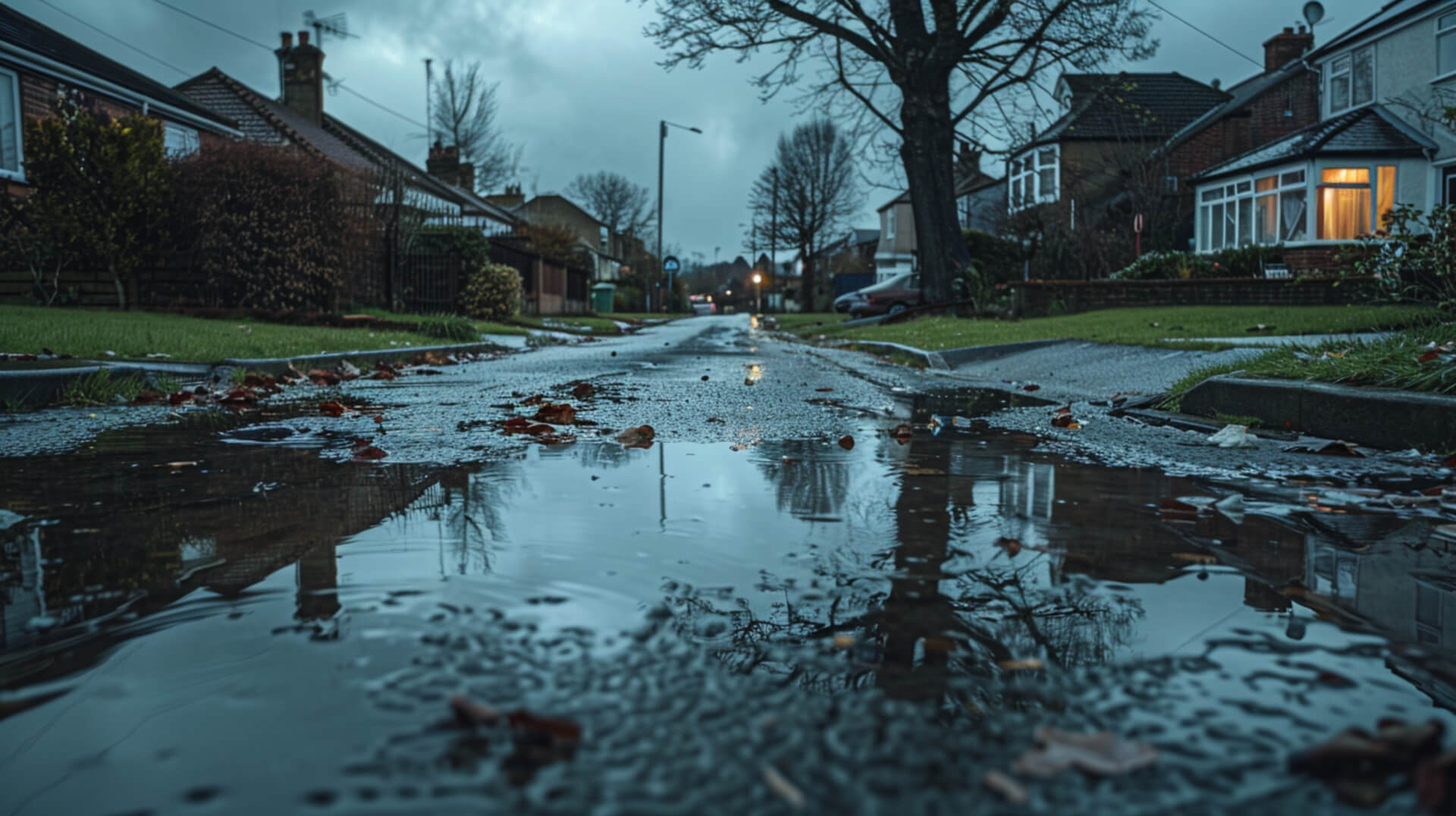
Water main leaks are not just a nuisance; they have significant environmental and health implications that necessitate prompt and effective management.
Environmental Consequences of Leaks
- Water Waste: Leaks can lead to substantial water loss, which is particularly critical in areas facing water scarcity.
- Ecosystem Disruption: Escaping water can cause soil erosion and negatively impact local ecosystems.
Health Risks Linked to Water Main Contamination
- Contaminant Exposure: Leaks can introduce soil contaminants into the water supply, posing health risks.
- Waterborne Diseases: A compromised water main can be a conduit for pathogens, increasing the risk of diseases.
Exacerbating Water Scarcity
- Resource Depletion: Continuous leaks strain already limited water resources, exacerbating scarcity issues.
- Sustainable Water Management: Addressing leaks is vital for conserving water and ensuring a sustainable supply for future generations.
By understanding these impacts, you can appreciate the urgency of repairing water main leaks and the importance of maintaining a robust water infrastructure.
Strategies for Preventing Water Main Damage

Preventative maintenance is key to ensuring the longevity and reliability of water main systems. By adopting a proactive approach, you can mitigate the risks of water main damage.
Routine Maintenance and Inspections
Regular maintenance schedules are crucial for early detection of potential issues:
- Inspections: Periodic professional inspections can identify signs of wear, corrosion, or damage.
- Monitoring: Implementing monitoring systems for pressure changes or water quality can alert you to problems.
Minimising Risk Factors
Strategic planning can reduce the likelihood of water main damage:
- Landscaping: Avoid planting deep-rooted trees near water lines to prevent root intrusion.
- Construction: Utilise construction techniques that protect existing water mains from accidental damage.
Professional Interventions
Engaging with water main specialists can provide expert care:
- Expert Assessment: Professionals can assess the condition of water mains using advanced diagnostic tools.
- Timely Repairs: Prompt professional repairs can prevent minor issues from escalating into major problems.
Benefits of Proactive Maintenance
A proactive stance on water main maintenance offers several advantages:
- Cost Savings: Preventing major repairs or replacements can be more cost-effective in the long run.
- System Reliability: Regular maintenance ensures a consistent and safe water supply.
- Public Safety: Maintaining water main integrity is vital for protecting public health.
By understanding and implementing these strategies, you can effectively safeguard your water main infrastructure against common problems.
Advanced Repair Methodologies for Water Mains

In the realm of water main repair, technological advancements have introduced a range of sophisticated methodologies that enhance the efficiency and effectiveness of repair processes.
Trenchless Technology and Acoustic Equipment
Trenchless Technology: This modern approach minimises ground disruption by repairing pipes from the inside. Techniques such as pipe lining and pipe bursting allow repairs without extensive excavation, preserving the surrounding landscape and infrastructure.
Acoustic Equipment: Specialists use sensitive listening devices to detect the subtle sounds of water escaping from underground pipes. This non-invasive method pinpoints the location of leaks, enabling targeted repairs that reduce the need for broad excavation.
Non-Invasive Techniques for Water Main Repair
In scenarios where minimal disruption is a priority, non-invasive techniques are the preferred choice. These methods are particularly beneficial in urban areas where excavation can cause significant inconvenience and economic impact.
Selecting the Appropriate Repair Methodology
The choice of repair method depends on various factors, including the severity and location of the damage, the type of piping material, and the potential impact on the community. Selecting the right approach ensures that repairs are conducted efficiently, cost-effectively, and with minimal environmental impact.
Economic and Legal Considerations in Water Main Repair

Understanding the financial and regulatory landscape is crucial for property owners facing water main repairs. The costs and legal responsibilities can vary widely, influencing decisions and management strategies.
Repair and Replacement Costs
Repairing or replacing water mains can be a significant expenditure. Costs are influenced by:
- Extent of Damage: Minor repairs may only require patching, while extensive damage could necessitate full replacement.
- Repair Methodology: Advanced techniques like trenchless repair can be more cost-effective than traditional excavation.
- Location and Accessibility: Urban settings or hard-to-reach areas may increase repair costs due to logistical complexities.
Legal and Insurance Implications
Legal and insurance considerations play a pivotal role in managing water main repairs:
- Homeowner Responsibilities: Property owners are typically responsible for the water main segment that runs from their property to the connection point with the municipal line.
- Insurance Coverage: Policies may have limitations or exclusions for water main repairs, often requiring additional riders for comprehensive coverage.
Funding for Infrastructure Projects
For large-scale projects, funding sources may include:
- Government Grants: Programmes like the Bipartisan Infrastructure Bill provide resources for updating ageing water infrastructure.
- Local Investments: Municipalities may allocate funds or issue bonds to finance water main improvements.
For property owners, comprehending these economic and legal aspects is essential for informed decision-making and ensuring compliance with local regulations.
The Role of Professional Services in Water Main Maintenance
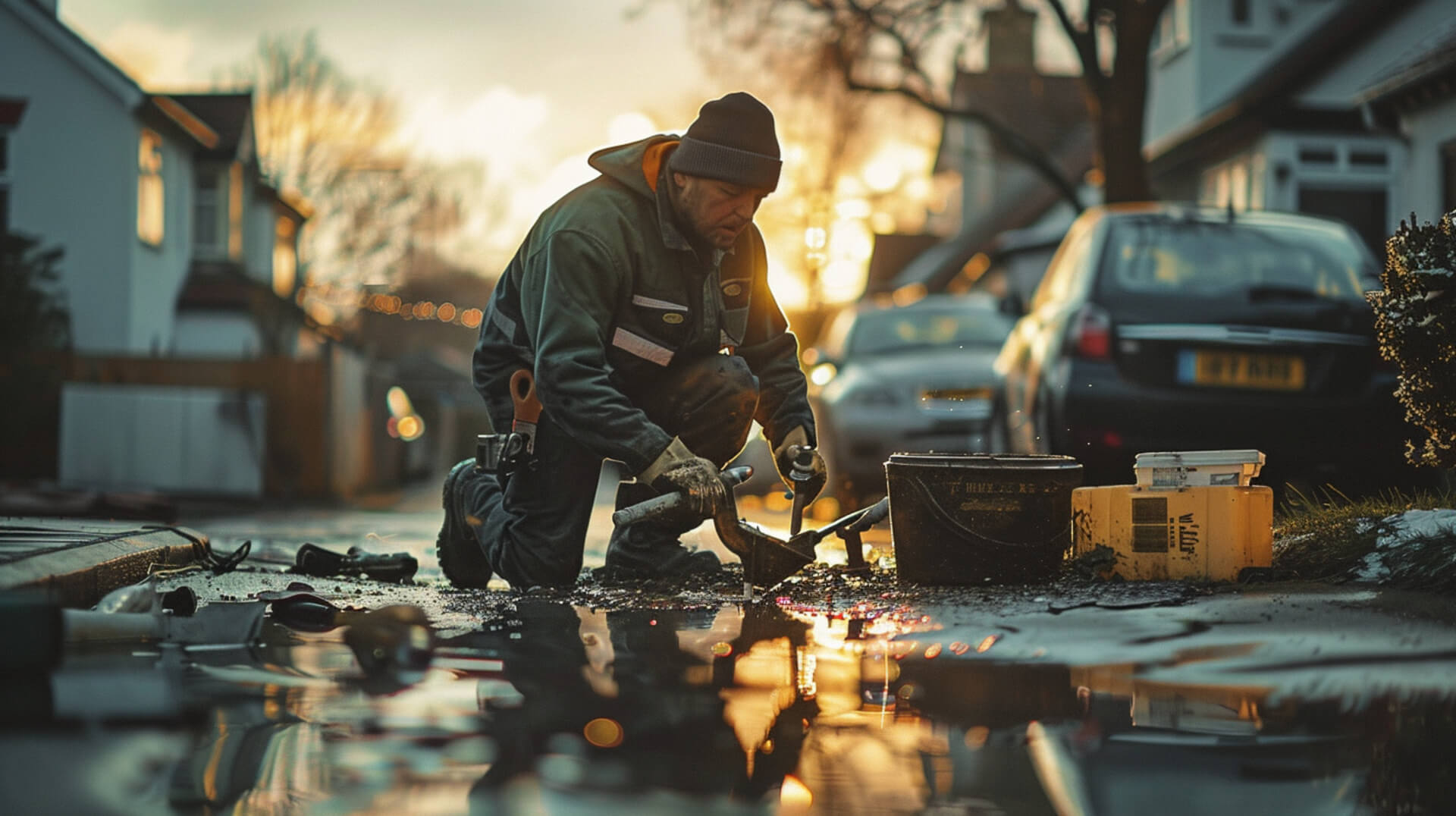
When addressing water main issues, the expertise of professional services is invaluable. These entities specialise in the repair and maintenance of water mains, offering a range of services to ensure the integrity of your water supply system.
Specialised Water Main Repair Services
Entities such as Beehive Plumbing and Miracle Leak Detection are examples of specialists that provide:
- Emergency Response: Offering 24/7 services to address urgent water main failures.
- Leak Detection: Utilising advanced acoustic and non-invasive technologies to locate leaks efficiently.
- Repair and Replacement: Implementing trenchless repair methods to minimise disruption and restore water main functionality.
Selecting a Professional Service Provider
To choose the right service provider, consider:
- Experience: Look for companies with a proven track record in water main repair.
- Technology: Ensure they use the latest diagnostic and repair technologies.
- Availability: Confirm their ability to respond promptly to emergency situations.
Importance of Professional Expertise
Partnering with experienced professionals is critical due to:
- Complexity: Water main repair can be complex and requires specialised knowledge.
- Regulatory Compliance: Professionals are familiar with local regulations and can ensure that repairs meet all legal requirements.
- Quality Assurance: Established companies provide warranties and guarantees on their work, offering peace of mind.
By engaging with professional services, you ensure that water main repairs are conducted with the highest standards of quality and reliability.
Technological Tools for Diagnosing Water Main Issues
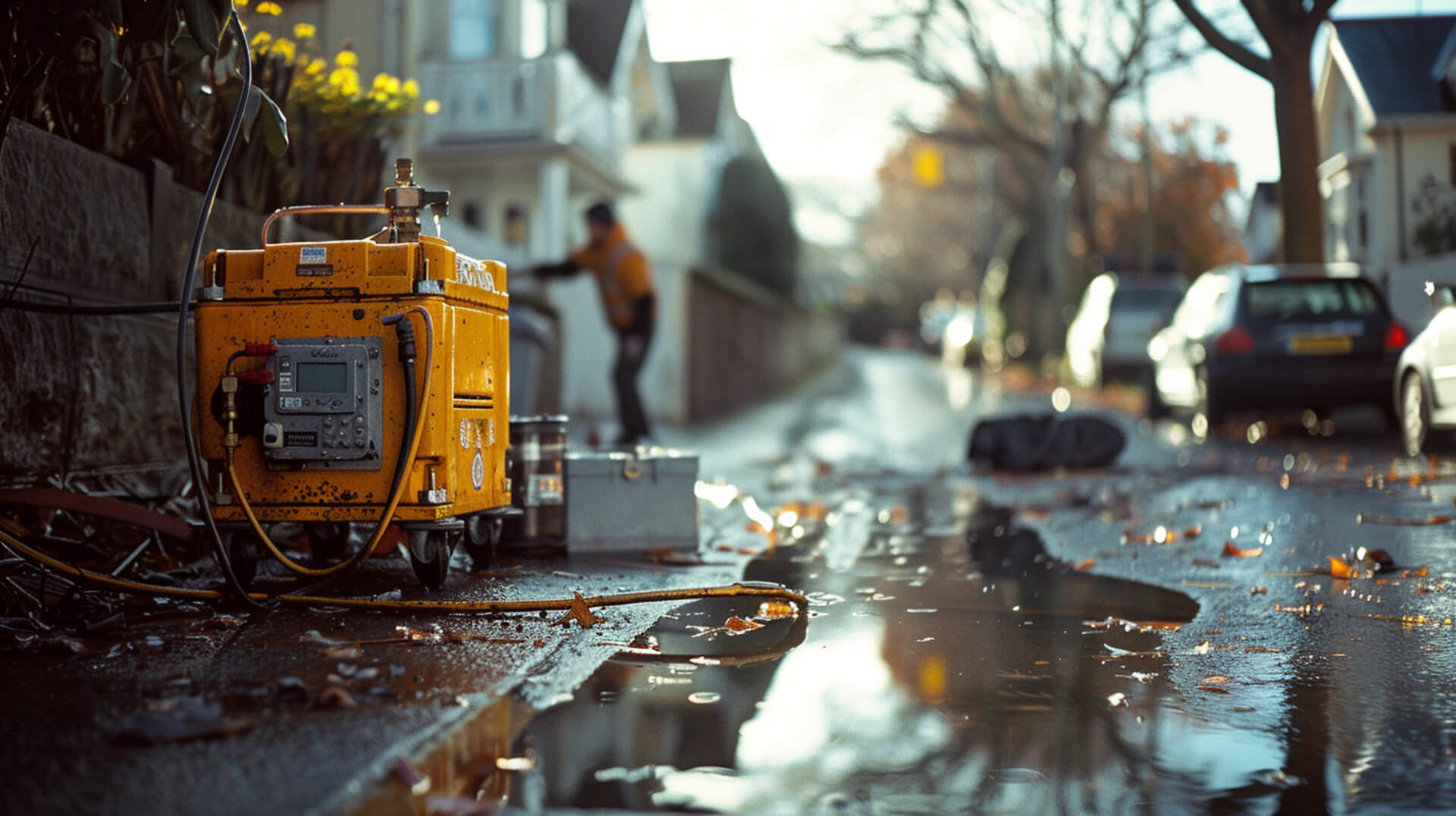
Advancements in technology have significantly improved the diagnosis of water main problems, allowing for more precise and less invasive interventions.
Video Inspection
Video Inspection: This technique involves inserting a camera into the water main to provide real-time visual feedback. It allows professionals to identify issues such as cracks, blockages, and joint failures without excavation.
Acoustic and Thermal Imaging
Listening Discs: Specialists use these devices to detect the sound of water leaking from pipes, which is often inaudible to the human ear. By pinpointing the location of these sounds, they can identify the exact spot for repair.
Thermal Imaging: Thermal cameras can visualise temperature differences in the ground where a water main is located. Cooler areas may indicate a leak, as water escaping from the pipe reduces the soil temperature.
Minimising Invasive Methods
These technologies reduce the need for invasive methods, preserving infrastructure and reducing repair times. By identifying problems with precision, they also minimise the area that needs to be excavated for repairs, leading to cost savings and less environmental impact.
Investing in these diagnostic tools is beneficial for the long-term health of water mains, ensuring that issues are addressed promptly and effectively, maintaining the integrity of the water supply system.
Addressing Infrastructure Challenges and Ageing Water Mains
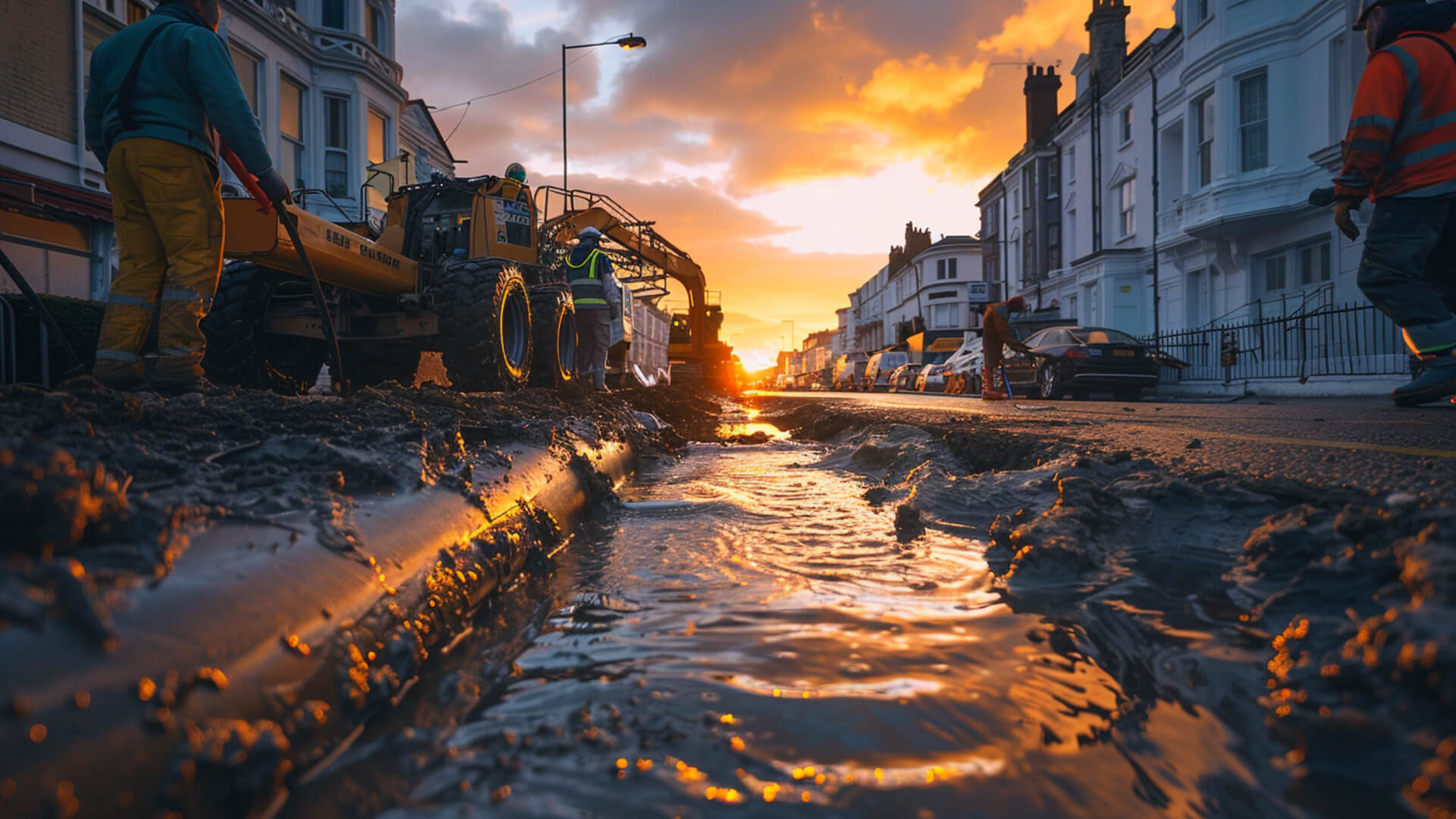
Ageing water mains pose significant challenges to municipalities and property managers, requiring a strategic approach to ensure water security and system reliability.
Challenges of Ageing Infrastructure
Ageing water mains are susceptible to:
- Frequent Breaks: Older pipes are more prone to cracks and bursts, leading to service interruptions.
- Corrosion: Over time, pipes can corrode, affecting water quality and flow.
- Capacity Issues: As populations grow, older systems may not meet increased demand.
Planning for Water Main Replacement
Municipalities and property managers can plan replacements by:
- Assessing System Age: Prioritise areas with the oldest infrastructure for replacement.
- Budgeting for Upgrades: Allocate funds for gradual upgrades to spread out costs over time.
Mitigation Strategies
To reduce the risks associated with frequent breaks:
- Proactive Inspections: Regularly inspect pipes to identify and address issues early.
- Emergency Protocols: Develop response plans to quickly address breaks and minimise impact.
Importance of Strategic Renewal
A strategic approach to infrastructure renewal is essential to:
- Ensure Water Quality: Updated systems can better maintain the purity of the water supply.
- Support Community Growth: Modernised water mains can support expanding populations and development.
- Promote Sustainability: Newer, more durable materials reduce the need for frequent repairs and conserve resources.
By addressing these aspects, municipalities and property managers can maintain a robust and efficient water main system, safeguarding the community’s access to clean water.
Implementing Effective Water Main Replacement Programmes

Determining when to replace water mains rather than repair them is a critical decision for maintaining a safe and efficient water supply.
Deciding Between Replacement and Repair
Water main replacement may be preferable when:
- Age of Pipes: The water main has reached or exceeded its expected lifespan and is prone to frequent issues.
- Extent of Damage: Repairs are no longer cost-effective or sustainable due to the severity of the damage.
- Upgrading Capacity: Increased demand on the water system necessitates upsizing pipes to meet current and future needs.
Considerations for Water Main Replacement
Key factors guiding replacement decisions include:
- Water Quality Concerns: Replacement may be necessary to address persistent contamination issues, such as lead leaching from old pipes.
- Regulatory Compliance: New regulations may require upgrading to newer standards for safety and efficiency.
- Infrastructure Development: Urban development or changes in land use can necessitate the relocation of water mains to better serve the community.
Planning for Replacement Initiatives
Comprehensive planning is essential to ensure the success of replacement programmes:
- Assessment: A thorough evaluation of the current system’s condition and capacity needs.
- Coordination: Collaboration with stakeholders, including local authorities and the community, for minimal disruption.
- Budgeting: Securing funding and managing resources effectively to cover the costs of large-scale replacements.
By carefully considering these aspects, you can implement a successful water main replacement programme that ensures the long-term reliability of your water infrastructure.
Understanding Water Main Repair Necessities
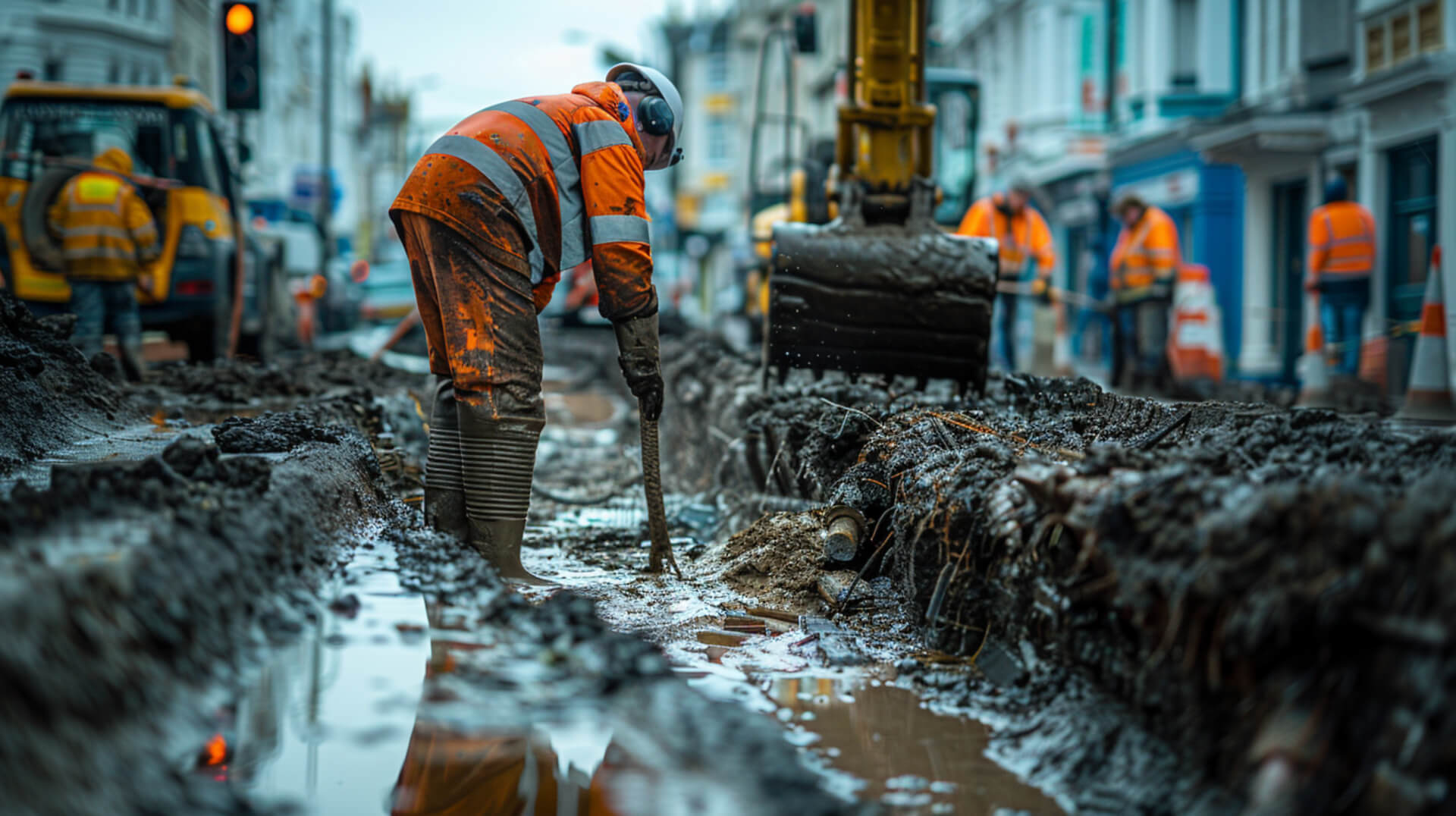
For property owners, business owners, and facility managers, recognising the common problems that necessitate water main repair is critical. This knowledge not only aids in early detection and prevention but also ensures the safety and functionality of the water supply system.
Benefits of a Proactive Approach
A proactive stance towards water main maintenance can significantly enhance the system’s longevity. By regularly inspecting and promptly addressing issues, you can avoid the disruptions and expenses associated with major repairs or full-scale replacements.
Key Takeaways for Effective Management
Effective water main management includes:
- Regular Inspections: Schedule routine checks to catch issues before they escalate.
- Risk Mitigation: Implement strategies to minimise potential damage from environmental and human factors.
- Technological Integration: Utilise advanced diagnostic tools for accurate problem identification.
Collaborative Efforts for Water Main Integrity
Collaboration is essential in managing water main systems. Property owners should work closely with professional services and municipalities to ensure that repairs are performed to standard and that preventive measures are in place. This partnership is vital for a resilient water infrastructure.
